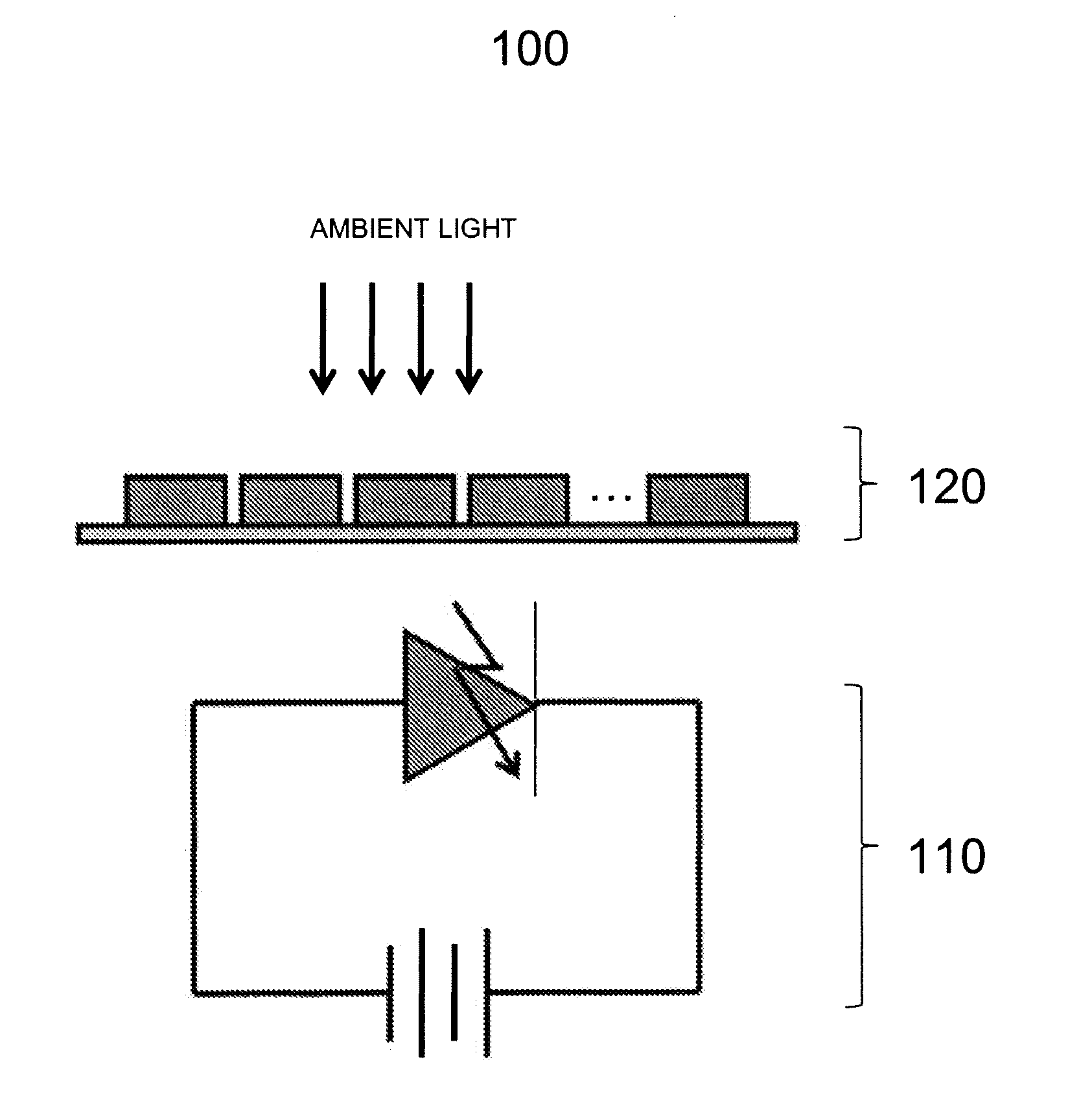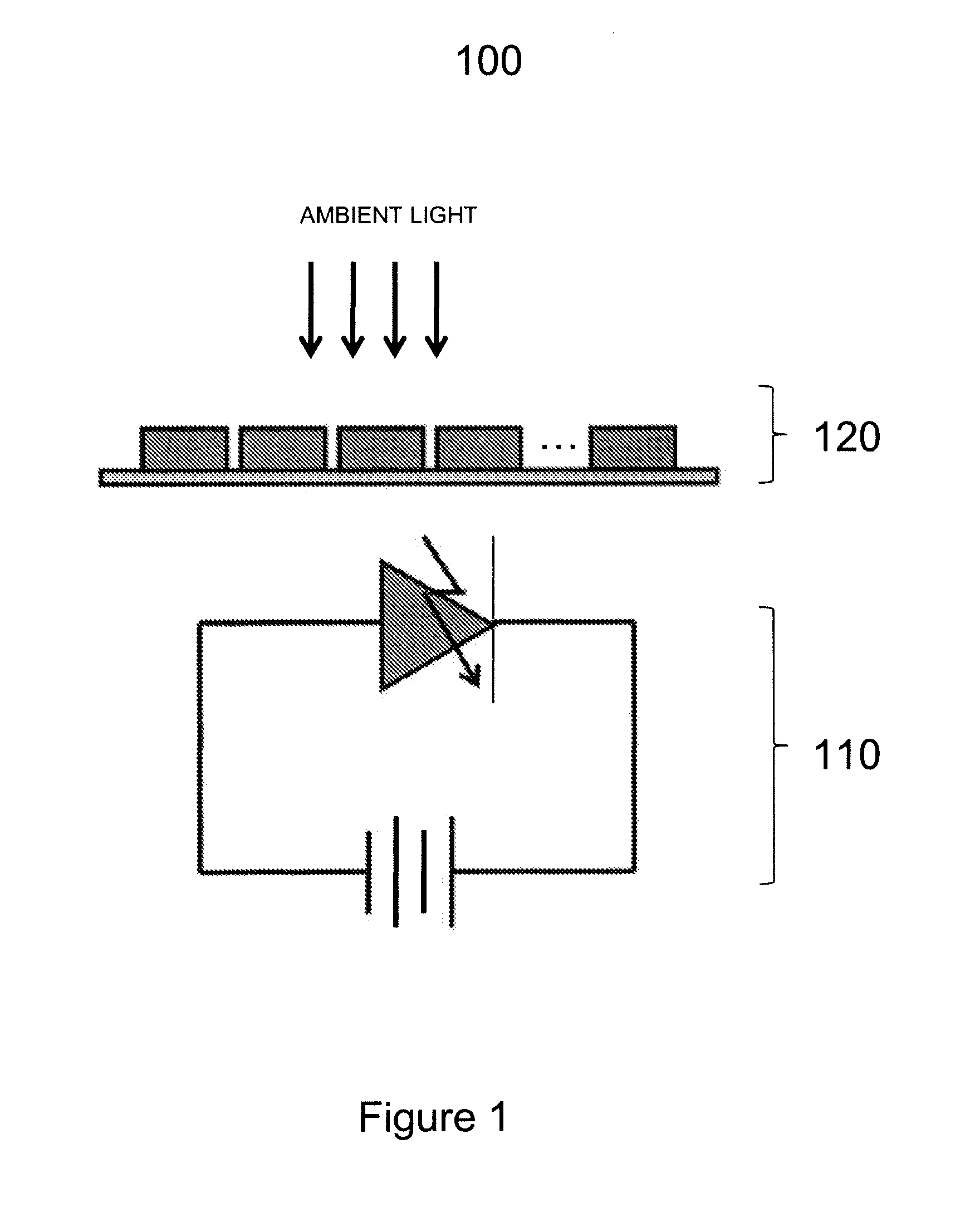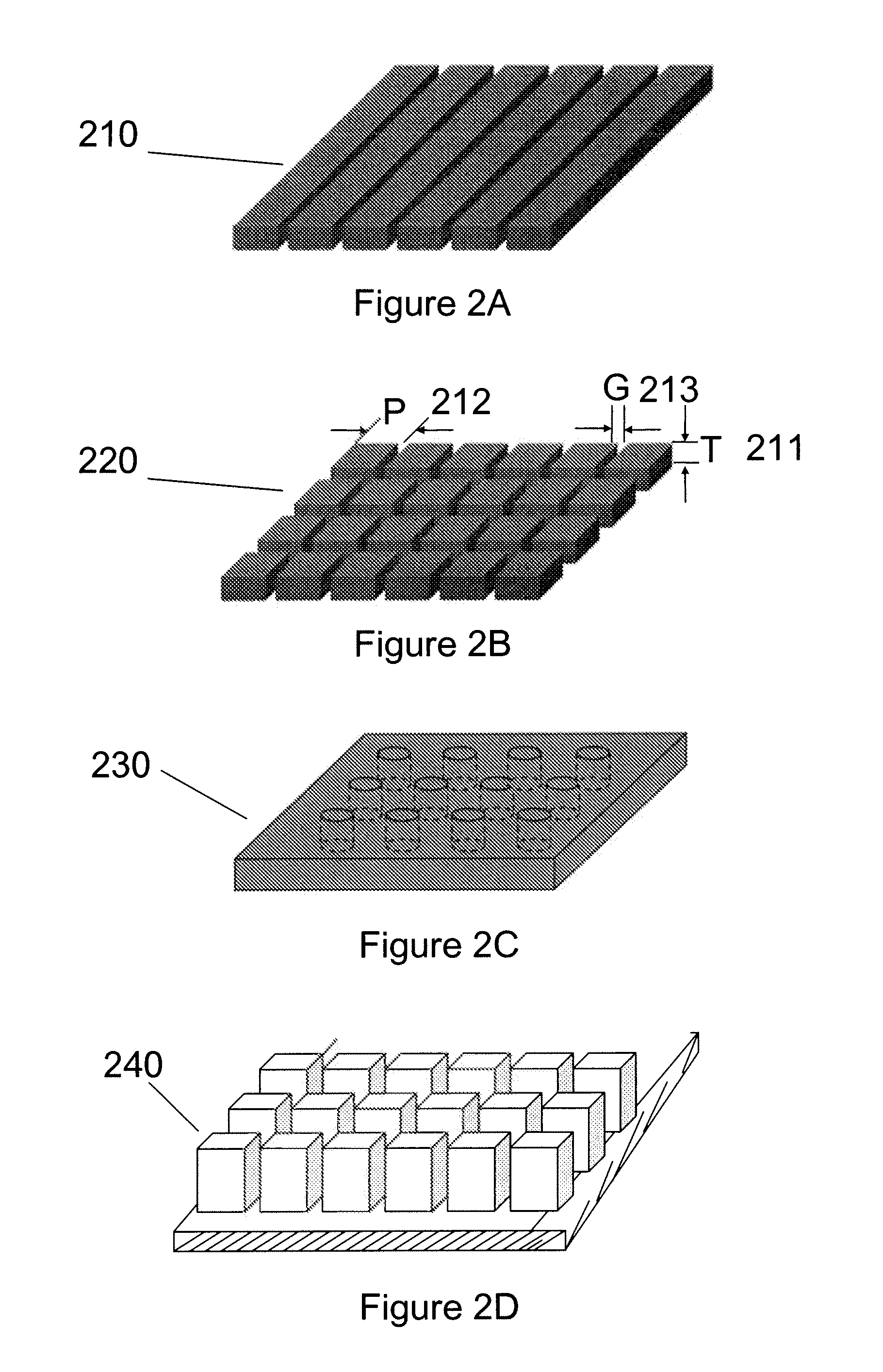Multi-purpose plasmonic ambient light sensor and visual range proximity sensor
a technology of ambient light sensor and plasmonic light, which is applied in the direction of pulse technique, optical radiation measurement, instruments, etc., can solve the problem that it is not feasible to use the ambient light sensor as a detector part of the proximity sensor, and achieve the effect of improving the spectral response of the ambient light sensor and saving power or battery li
- Summary
- Abstract
- Description
- Claims
- Application Information
AI Technical Summary
Benefits of technology
Problems solved by technology
Method used
Image
Examples
Embodiment Construction
[0015]Unless otherwise specified, the words “a” or “an” as used herein mean “one or more”. The term “light” includes visible light as well as UV and IR radiation. The invention includes the following embodiments.
[0016]In FIG. 1, a plasmonic ambient light sensor 100 is shown containing a photodetector 110 and a plasmonic optical filter device 120. The examples of plasmonic optical filter structures are shown in FIG. 2A, 2B, 2C and 2D.
[0017]Any suitable plasmonic optical filter structures may be used. Non-limiting examples of such filter structures are described in the following patent applications, which are incorporated by reference herein in their entirety:
[0018]WAVELENGTH SELECTIVE METALLIC EMBOSSING NANOSTRUCTURE, PCT patent application serial number PCT / US2007 / 026135 filed on Dec. 21, 2007 which claims priority to U.S. Provisional Application Ser. No. 60 / 877660, filed on Dec. 29, 2006;
[0019]PLASMONIC FABRY-PEROT FILTER, PCT patent application serial number PCT / US2007 / 026071 file...
PUM
 Login to View More
Login to View More Abstract
Description
Claims
Application Information
 Login to View More
Login to View More - R&D
- Intellectual Property
- Life Sciences
- Materials
- Tech Scout
- Unparalleled Data Quality
- Higher Quality Content
- 60% Fewer Hallucinations
Browse by: Latest US Patents, China's latest patents, Technical Efficacy Thesaurus, Application Domain, Technology Topic, Popular Technical Reports.
© 2025 PatSnap. All rights reserved.Legal|Privacy policy|Modern Slavery Act Transparency Statement|Sitemap|About US| Contact US: help@patsnap.com



